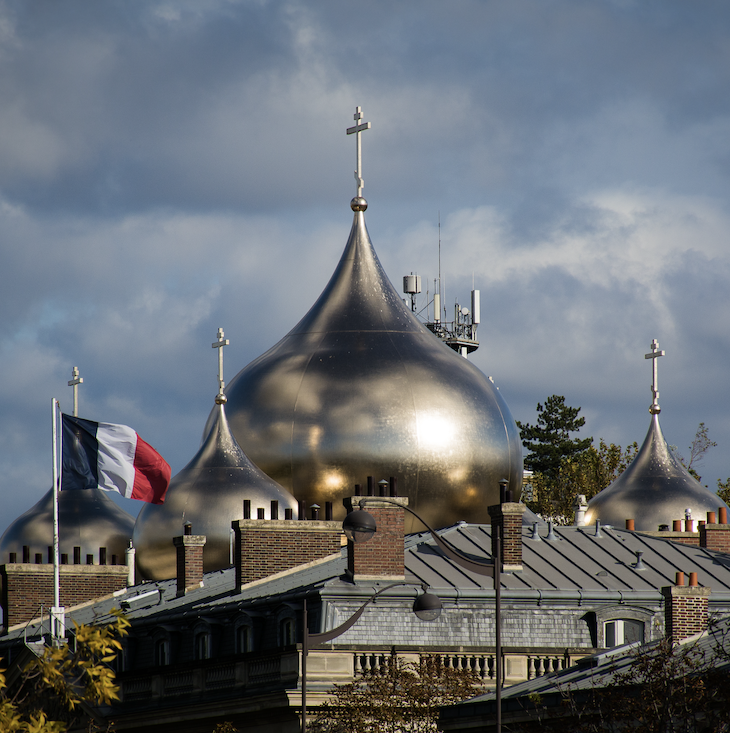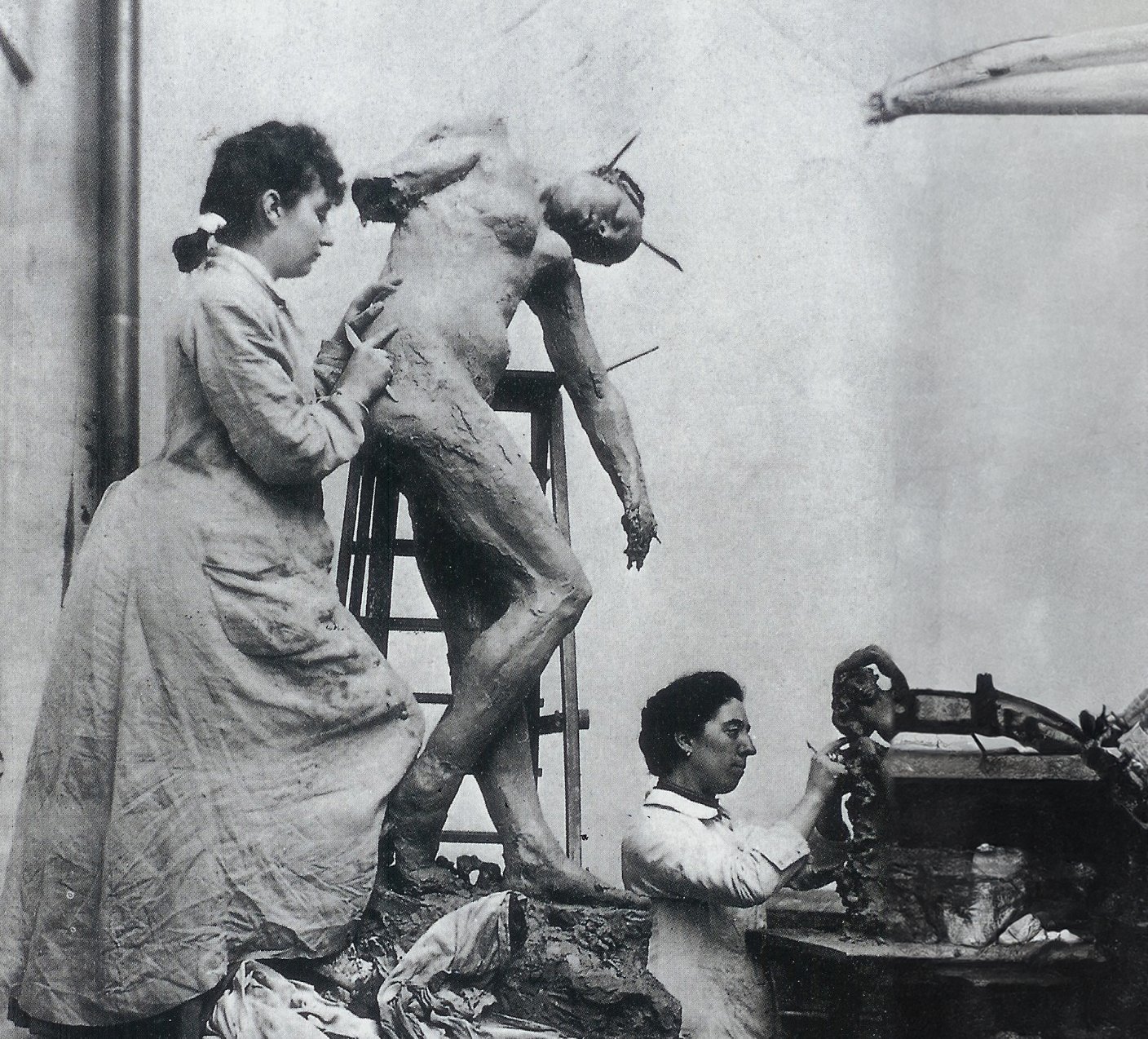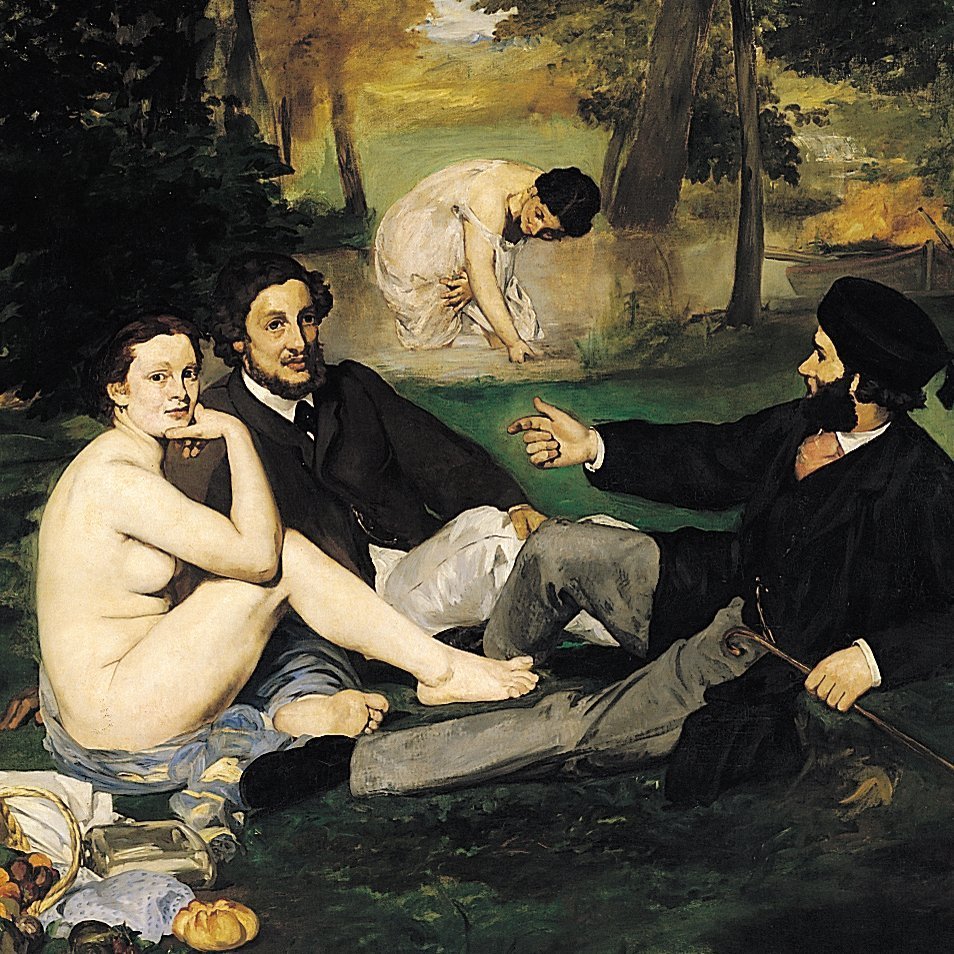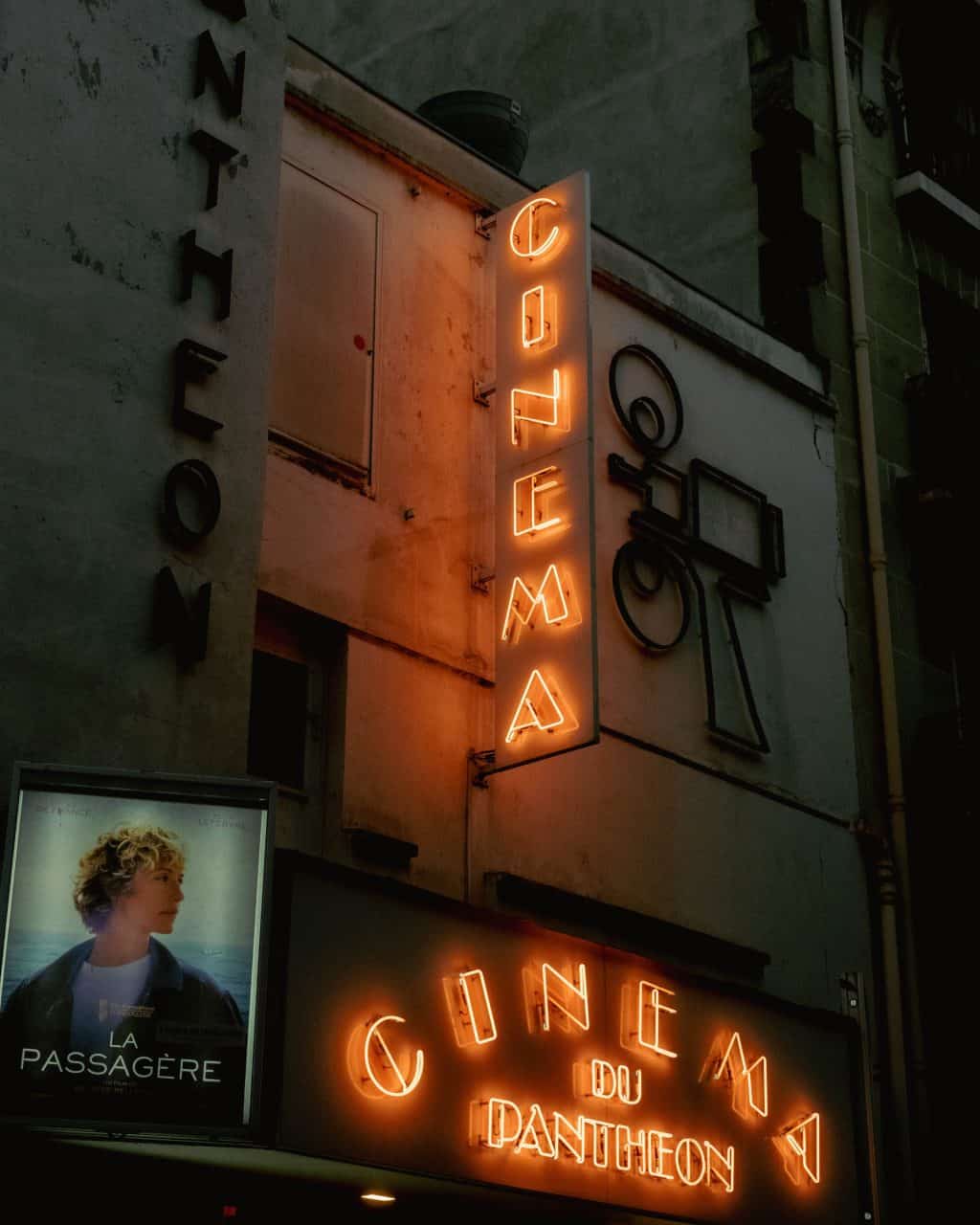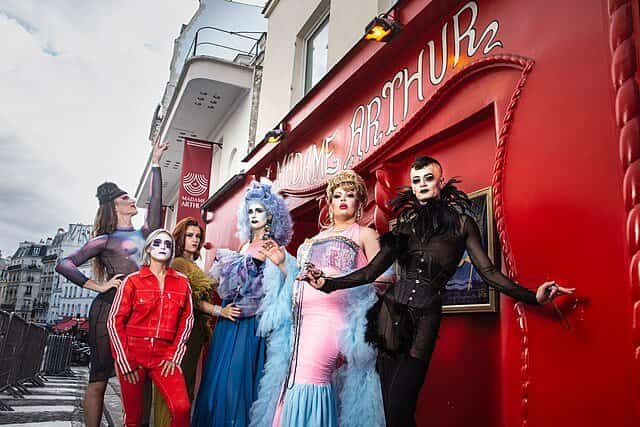The spring 2023 edition of our bilingual magazine “La Gazette” is out! Come get your free copy at our NYC and LA locations to read the entire magazine. This article will give you a sneak peek into the issue!
While Paris is always at the top of our list of travel destinations, we’re partial to springtime. As temperatures rise and trench coats make their long-awaited return, the entire city comes back to life. In celebration of the season of renewal (and flowers!), we’ve curated a list of Paris’ most beautiful parks and gardens where you can enjoy the city in full bloom.
By ALAINA SCHWARTZ
LE Jardin des tuileries
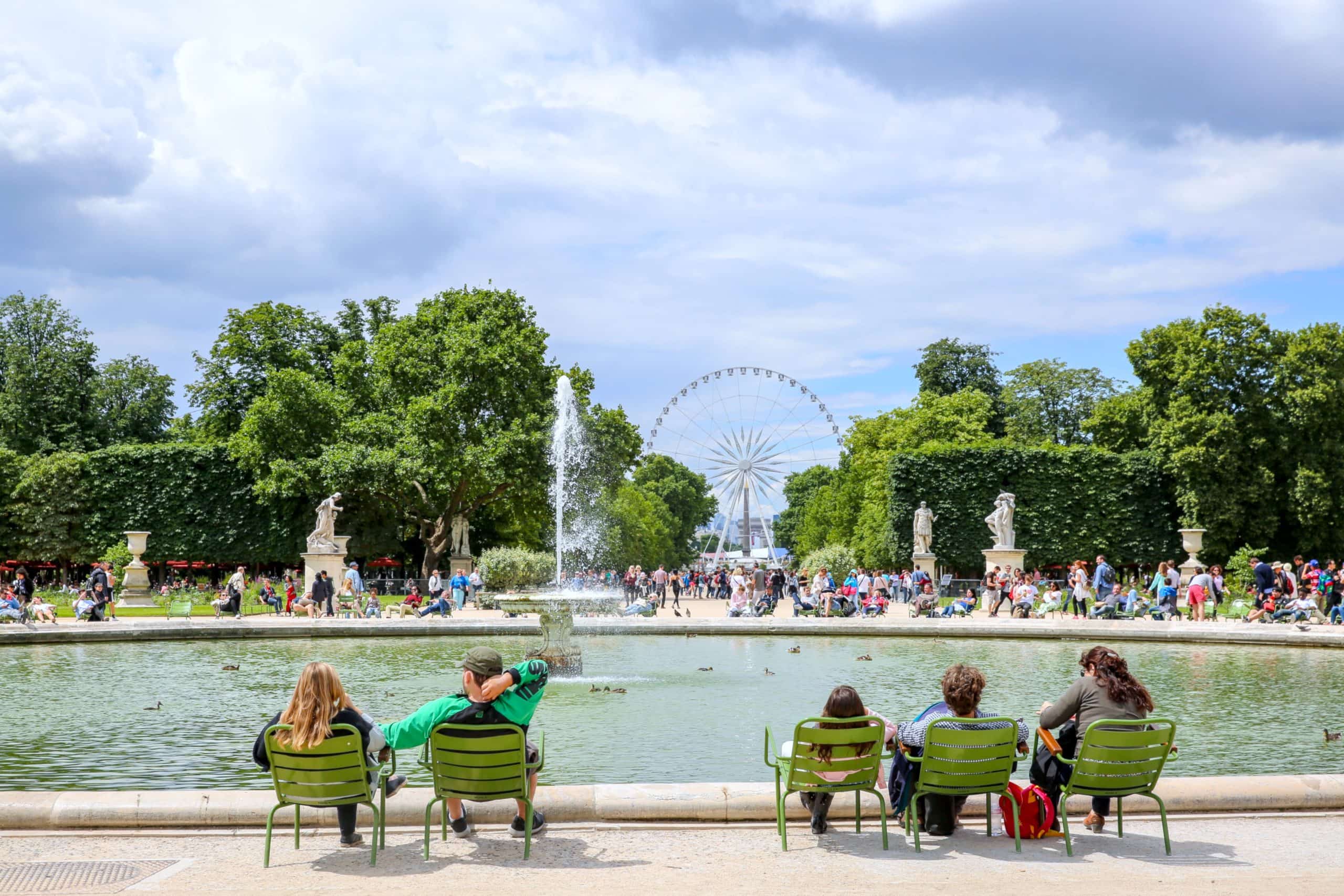
Located in the elegant first arrondissement, the Jardin des tuileries is the perfect place for a stroll through the city center. The gardens are book-ended by the Place de la Concorde to the west and the Musée du Louvre to the east. The Musée de l’Orangerie is located inside the gardens, and is home to some of France’s most famous flowers that thrive year-round, Claude Monet’s Water Lilies!
The gardens are located on the property of the former Palais des tuileries, which was constructed in 1564 at the order of Queen Catherine de Medicis. They were later redesigned in their current French formal style by André Le Nôtre in 1664, who was also working on the gardens at the Palace of Versailles at the time. The French formal style, or jardin à la française, emphasizes order, symmetry, and well-defined boundaries. In keeping with this style, the gardens are perfectly-manicured, and organized in a grid. The paths are lined with statues by a variety of artists, as well as ponds, and, of course, flowers!
Did you know? To help out with the landscaping, the gardeners of the Jardin des tuileries have enlisted the help of goats! Don’t be surprised if you spot one “mowing the lawn”.
LE JARDIN DU LUXEMBOURG
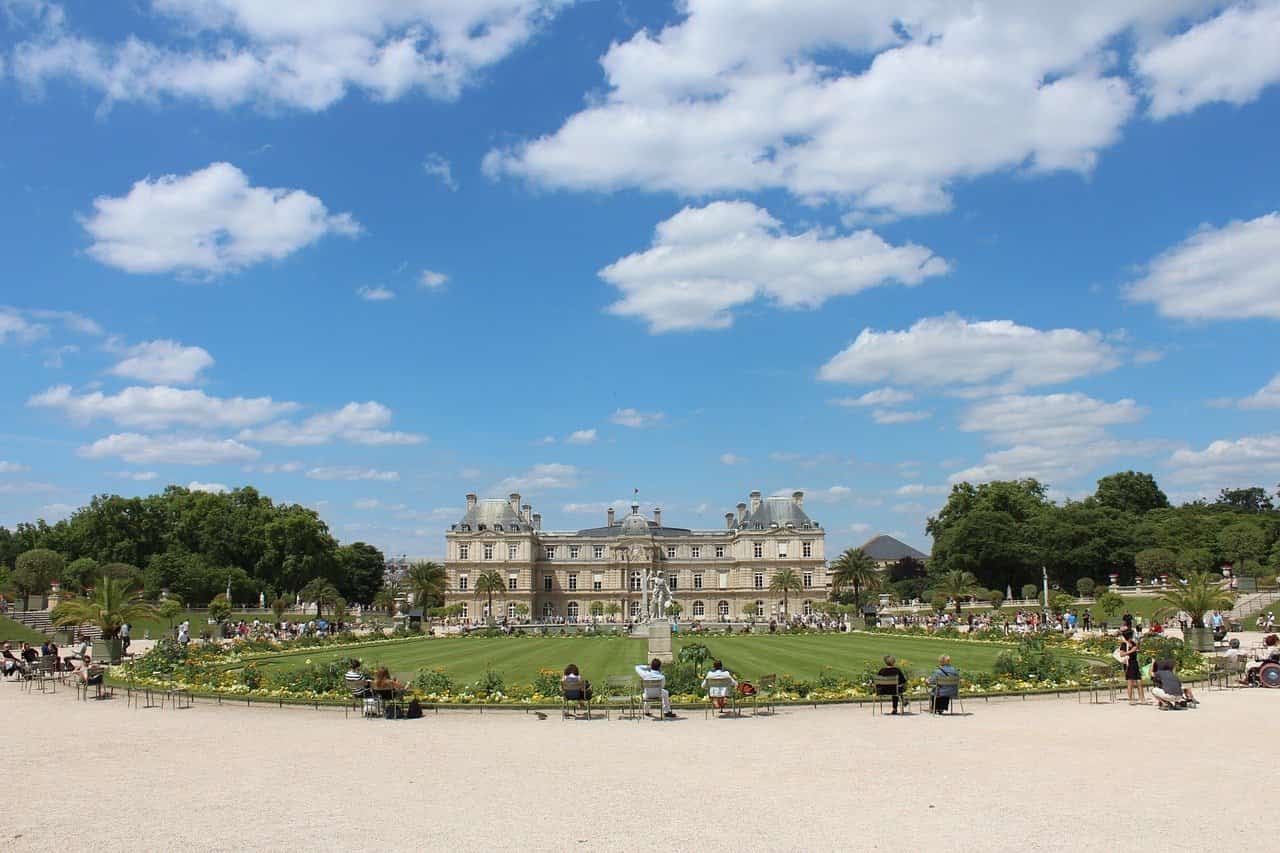
Named for the Palais du Luxembourg, which was purchased by Queen Marie de Medici in 1611, the Jardin du Luxembourg is another immaculate, centrally located garden in Paris. You’ll find it in the sixth arrondissement, not far from the Latin Quarter and Saint-Germain-des-Prés neighborhoods. At the time of its creation in 1612, the garden occupied just eight acres of land. Since then, it has undergone multiple expansions and redesigns, and now covers over fifty-six acres.
The design was inspired by the Boboli Gardens in Florence, where Medici spent her childhood. The garden is divided into two sections, with one following the French style and the other in the less-formal English style (à l’anglaise). English gardens are far less manicured than French ones, and allow nature to just “do its thing”. You’ll find this style in the southern area of the garden, along with an orchard and greenhouses brimming with an assortment of plants and over 400 species of orchid. For some romance and stunning color, the rose garden is also a must-see!
LE JARDIN DES PLANTES
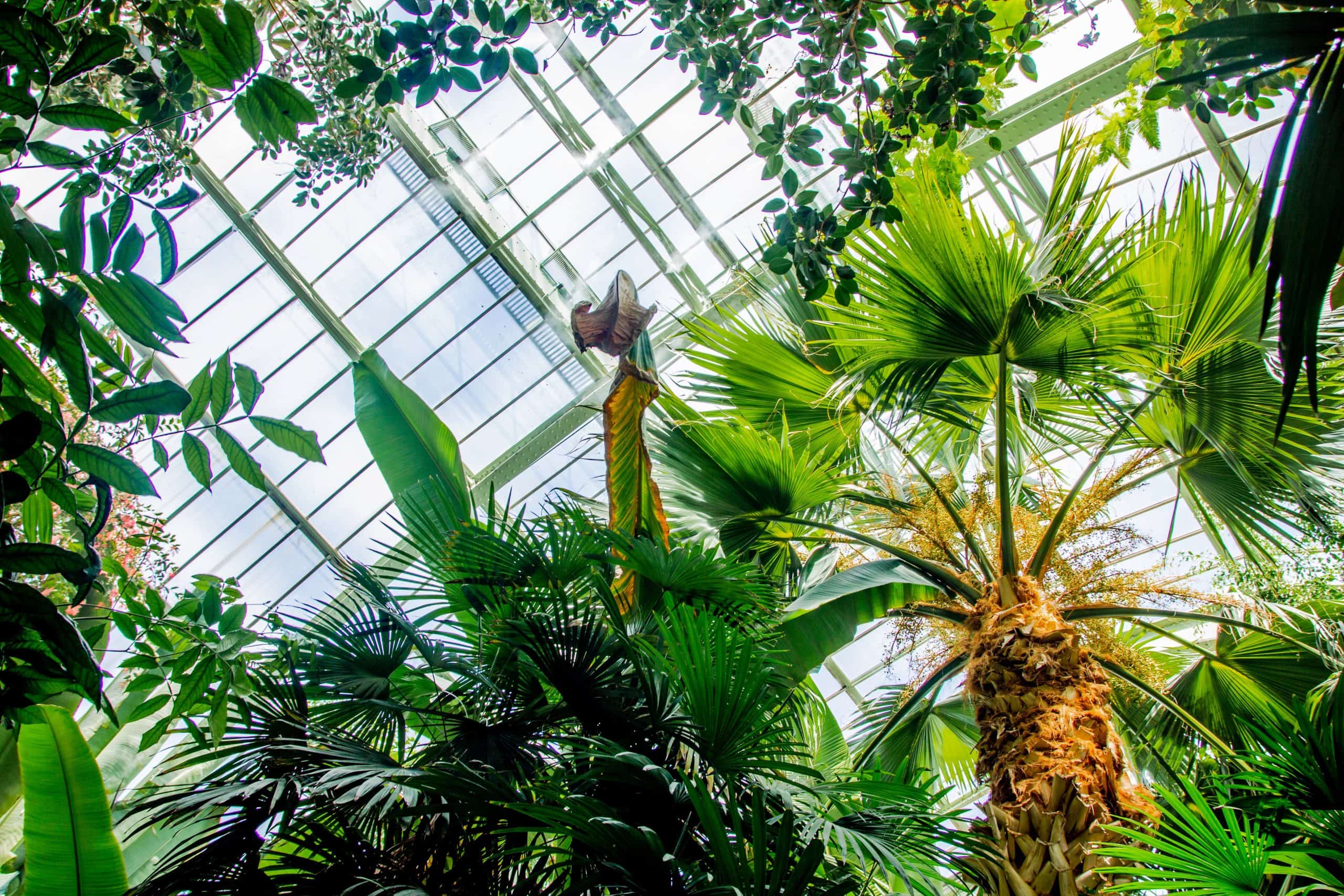
Not far from the Jardin du Luxembourg is the Jardin des plantes, Paris’ expansive botanical gardens in the fifth arrondissement. The gardens were founded in 1635 with the name “Jardin royal des plantes médicinales” (Royal Garden of Medicinal Plants), whose mission was to educate physicians in botany and other sciences. Today, the Jardin des plantes is completely open to the public, and has a research center, multiple museums, libraries, and a zoo.
The gardens are incredibly rich in variety, so there’s something for everyone to enjoy. The massive formal garden, which has over 1,000 plants, is accessible from the main entrance by the Seine. Its tree-lined promenade has flowers in every color, and an occasional Japanese cherry tree. For a very unique experience, the Jardin des plantes ressources (Garden of Useful Plants) lives up to its name and contains a multitude of plants that we rely on each day. You’ll find everything from plants used in fragrances (rose, iris, and jasmine) to aromatic and condimentary plants such as horseradish and saffron.
Did you know? Springtime in Paris means it’s cherry blossom season! For a short time between March and April, pink and white blossoms can be found all over the city.
LE PARC MONCEAU
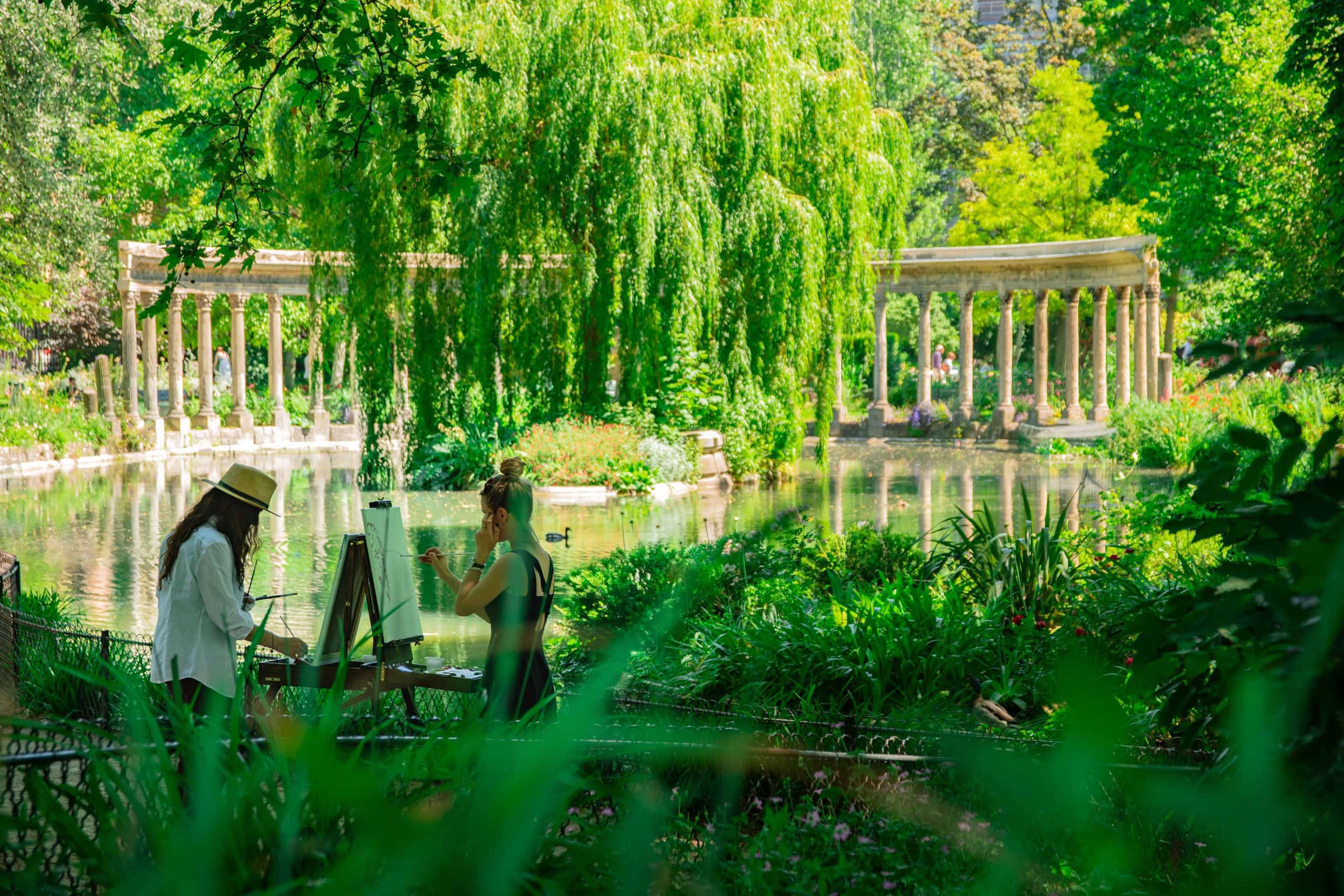
Parc Monceau, in the eighth arrondissement, is a bit more off the beaten path. It’s frequented by locals and is an ideal venue to go for a run, have a picnic, sunbathe, or read a book. It was founded in the seventeenth century, but restyled in 1781 as an English garden. Curved paths, randomly-placed statues, and organic landscaping make it stand out from other parks in the city.
Many consider Parc Monceau one of the most beautiful and romantic parks in Paris – so beautiful, in fact, that it’s even inspired some of the work of Claude Monet!
LA FONDATION CLAUDE MONET (GIVERNY)

A short train ride from Paris is the Fondation Claude Monet in Giverny. Following decades of careful restoration, the colorful home and gardens of Claude Monet were opened to the public in 1980. Having lived there for over forty years, the impressionist created some of his most important works on the property, many of which are on display. Visitors are welcome to explore the interior of the house, whose bright yellow dining room and pastel blue kitchen hint at what to expect in the gardens.
A lover of flowers and color, Monet immediately began redesigning the garden after settling in Giverny in 1883. He lined the main path to the house (the “Clos Normand”) with thousands of flowers, including daffodils, tulips, roses, and peonies. Equally entranced by water, he later purchased the land adjacent to the Clos Normand and added a jardin d’eau (water garden). In order to create a water lily pond, he diverted the arm of a nearby river. His final touches were the iconic Japanese bridge and water lilies.
Did you know? Monet had a deep appreciation for Japanese art and a large collection of Japanese prints which are still on display at his home in Giverny. Japanese-inspired design elements can be found all throughout the property.
LES JARDINS DU CHÂTEAU DE VERSAILLES
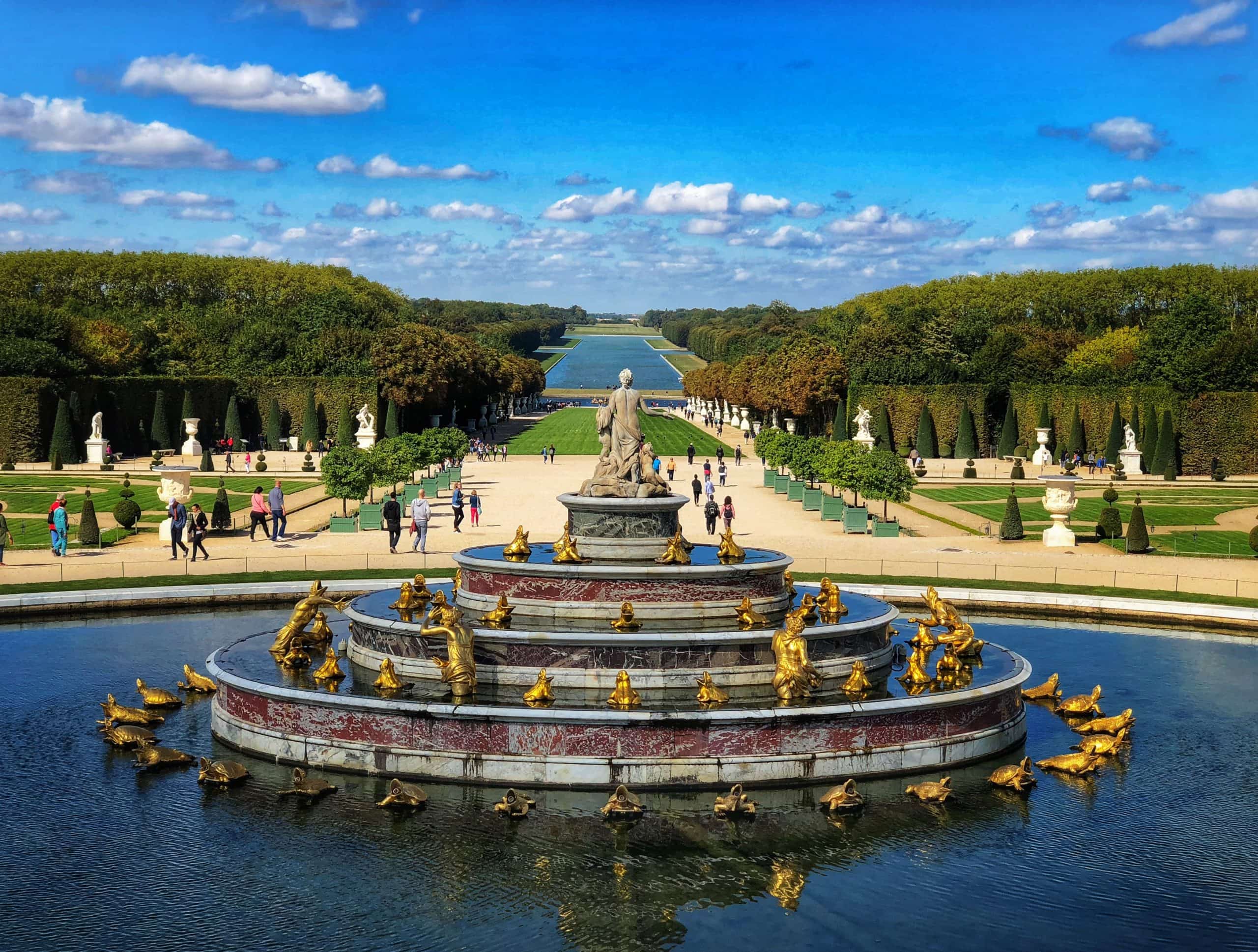
In 1661 André le Nôtre was charged by King Louis XIV with the task of designing and renovating the gardens of the Palace of Versailles. The King considered the gardens equally as important as the palace, so he personally reviewed every last detail throughout the forty-plus years it took to perfect them. The combined efforts of Le Nôtre and other experts resulted in what is undoubtedly the grandest example of a French garden.
The 1,900-acre garden has over 200,000 trees, in addition to over 210,000 flowers that are replanted annually. The highly-symmetrical and intricate layout requires intensive maintenance, including a replanting of the entire area every hundred years, which makes it even more impressive that the gardens today look nearly the same as they did in the seventeenth century! Flower gardens and parterres are scattered throughout, though the garden facing Marie-Antoinette’s private château, the Petit Trianon, is particularly popular among visitors.
The Water Parterre has a sweeping view of the gardens, its many fountains and sculptures, and the massive central canal. It’s easy to spend hours wandering the various paths and hidden groves.
Did you know? There are lots of ways to get around the gardens, go by foot, bicycle, golf cart, or even rowboat!
